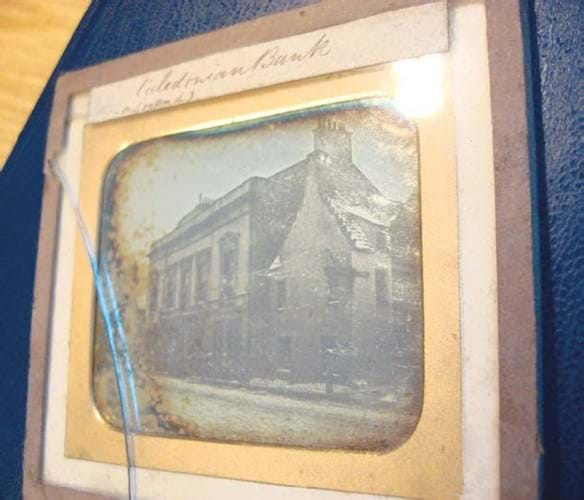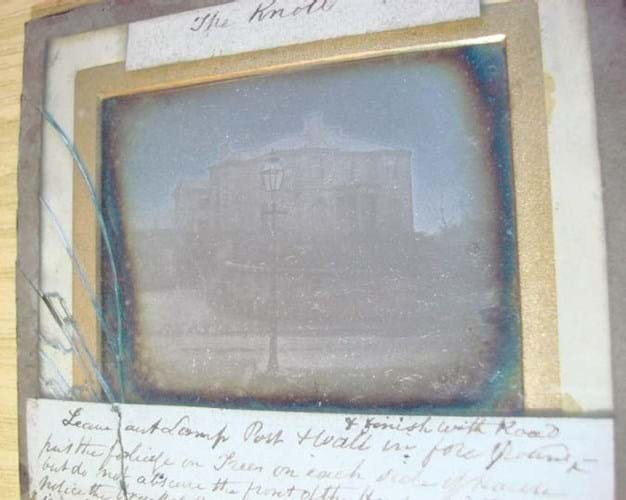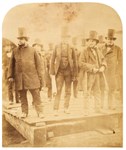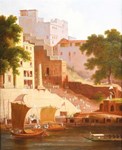
“All the glass was broken and the images were oxidised to the point where some were unrecognisable,” said auctioneer Brian Goodison-Blanks, who put them into a 1400-lot, budget-priced collectors sale with a £40-50 estimate.
A few requests for further condition reports and images and a phone call from a French enthusiast alerted Goodison-Blanks to the possibility they could go well over estimate, possibly reaching four figures.
“But on the day I didn’t even have to suggest an opening bid,” he said. “The internet just ran away.”
Against bidding from Europe, the images finally sold at £10,000 to a London dealer bidding online.
Early landscapes

One of the titled and annotated daguerreotypes among the seven which made £10,000 at Bearnes, Hampton & Littlewood.
Why? The daguerreotypes were very early examples of the mid-19th century photographic breakthrough and they were landscapes rather than studio portraits where the light can be arranged.
The scenes of buildings in north-east Scotland were titled - although not always legibly - and, judging by handwritten instructions to printers, were intended to be commercial engravings. ‘Paint the foliage on the trees but do not obscure the house’ and ‘…put the rubbish and railings in front of the house according to the tracing sent herewith’ were two examples of early ‘Photoshopping’.
Research will now aim at identifying the photographer. “Perhaps someone recognised or will recognise the handwriting,” suggested Goodison-Blanks.
Scotland was home to a number of candidates including Aberdeen-based George Washington Wilson (1823-93), who pioneered outdoor photography, claiming in 1864 that he had sold more than half a million prints.
Whether the seven daguerreotypes at Exeter were the basis of any, however, is another matter.














